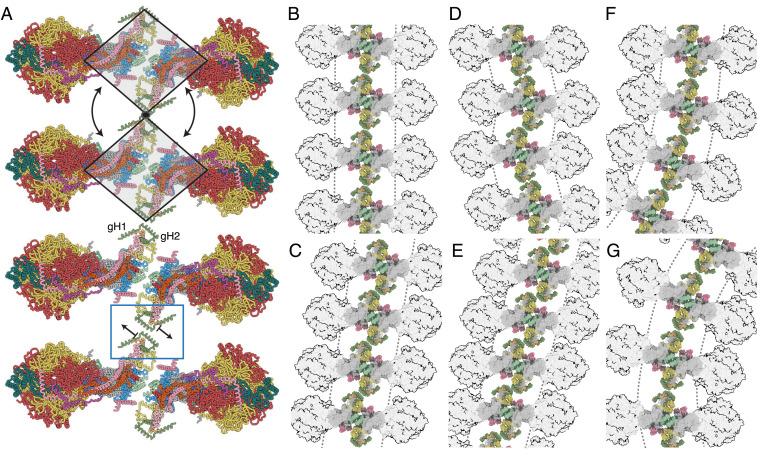Fig. 7.
Possible modes of association of dimeric bovine ATP synthases in the cristae. (A) Row of dimers viewed from above the cristae tips. In the two upper complexes, the gray trapezoids represent individual dimers moving as rigid bodies; in the lower two complexes, the individual dimers are translated as indicated by the arrows via the dimer-dimer interface in the blue box. (B–G) The impact of translation or rotation of dimers on the long-range order of oligomeric rows. In B, back-to-face stacked rows of dimers provide the simplest architecture of straight and planar oligomers. (C–E) Effects of dislocation of the g-g interaction at the interface between two dimers. In C and E, compact back-to-face rows of dimers form with a range of inclinations with respect to the perpendicular axis, or, in D, as an alternating “zig-zag” arrangement. (F and G) Bending of the rows of oligomers laterally by rotation about a fixed point at the g-g contact. More complex arrangements can be envisaged by combination of the effects in B–G, with the additional possibility of curving the membrane positively along the axis of oligomerization, as in Fig. 5D. For colors of subunits, see Fig. 1 legend.

